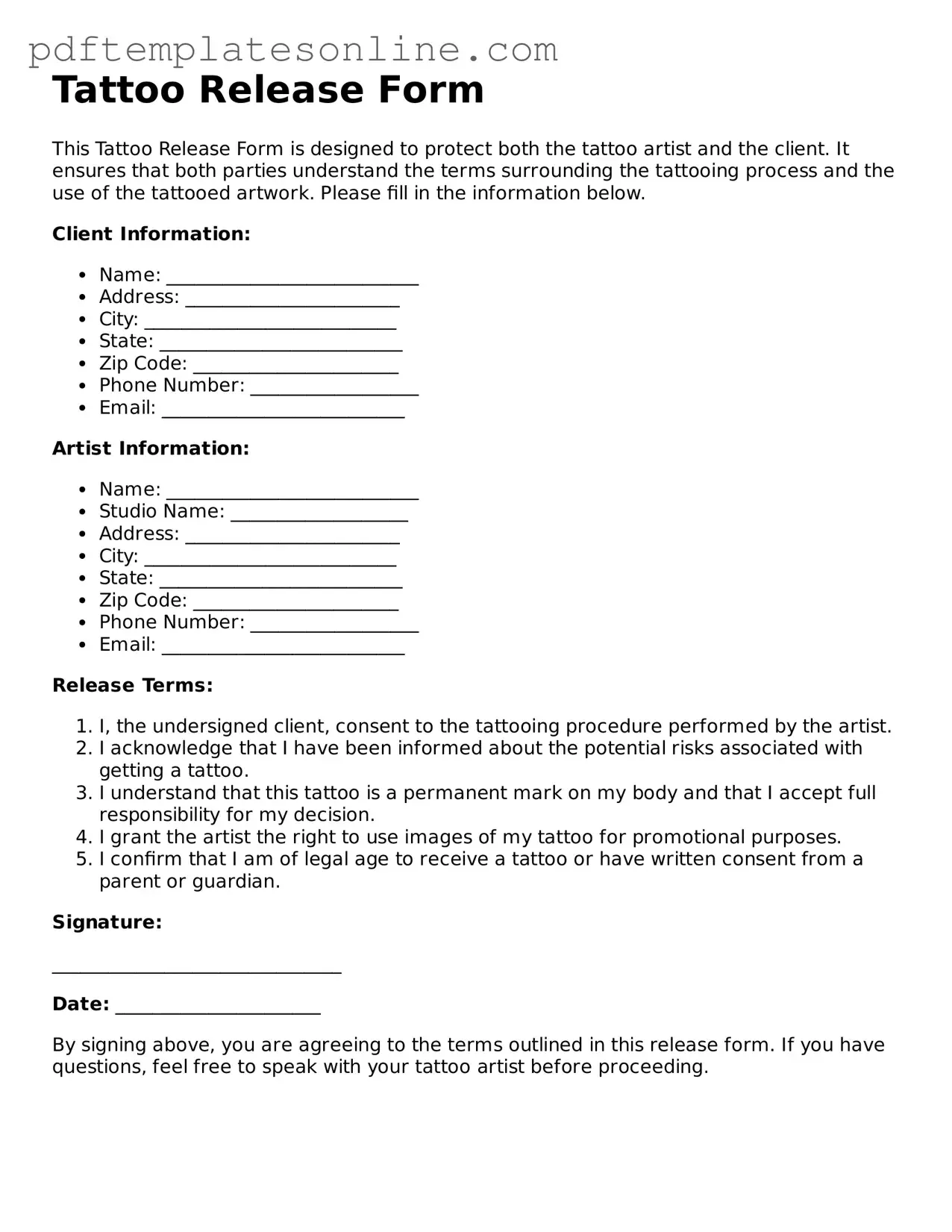Filling out a Tattoo Release form is an important step for both the artist and the client. However, several common mistakes can lead to misunderstandings or legal issues. One of the most frequent errors is not reading the form thoroughly before signing. Clients often rush through the process, overlooking key details that explain their rights and responsibilities.
Another common mistake is failing to provide accurate personal information. Incomplete or incorrect details can create problems later on, especially if there are any disputes regarding the tattoo or the release itself. Always double-check that your name, contact information, and any other required data are correct.
Many people also forget to ask questions about the form. If there’s something unclear, it’s essential to seek clarification. Ignoring this step can lead to confusion about what the release entails, potentially resulting in unwanted surprises down the line.
Additionally, some individuals neglect to consider the implications of the release. It’s crucial to understand that signing the form often means you’re giving up certain rights, such as the ability to sue for damages. Taking the time to comprehend these implications can save you from future regret.
Another mistake is not keeping a copy of the signed form. Clients should always retain a copy for their records. This can be invaluable if questions arise later regarding consent or the scope of the release.
Finally, some people fail to discuss the tattoo’s design and its potential uses. If the artist plans to use images of your tattoo for promotional purposes, it’s vital to clarify this in the release. Make sure you’re comfortable with how your tattoo may be shared or displayed.
